Follow Lilach
How to go from social listening to actionable insights
If you’ve followed my blog for some time, you’ve probably noticed my big love for social listening: it’s an incredibly powerful tool, one that can help you better understand your audience, your business, and your industry in general. Not to mention, you can use it in such a huge variety of ways, from market research to identifying social influencers – it’s pretty much a must-have tool for any business, especially one that has an online presence (and arguably, even if you don’t!). In this blog post, I’m going to show you how to go from social listening to actionable insights.
3 Ways to use social listening to grow your business
I’ve already mentioned some of the benefits and uses for social listening; now, though, I want to show you how exactly you can leverage this tool, no matter what industry you’re in or what your business is all about.
1. Market and audience research
Social listening essentially means monitoring the web for conversations; more specifically, your audience’s and your customer’s online conversations.
This can bring in a wealth of data that is essential to the growth of your business; after all, without a clear understanding of who exactly forms your audience and what their interests and preferences are, you can’t properly market your products/services or your business in general. And without proper promotion, well… the results just won’t be as great as you probably want them to be.
For example, social listening can help you understand the preference of your audience and the channels on which they spend their time online. That’s extremely useful as it tells you exactly where you need to be active and promote your business in order to reach more of your target audience.
Plus, it helps you understand what their interests are, what types of topics they like talking about, as well as what problems they have, including with your own business. For example, you can see at a glance what the most popular topics are for your audience through a word cloud generated from their conversations:
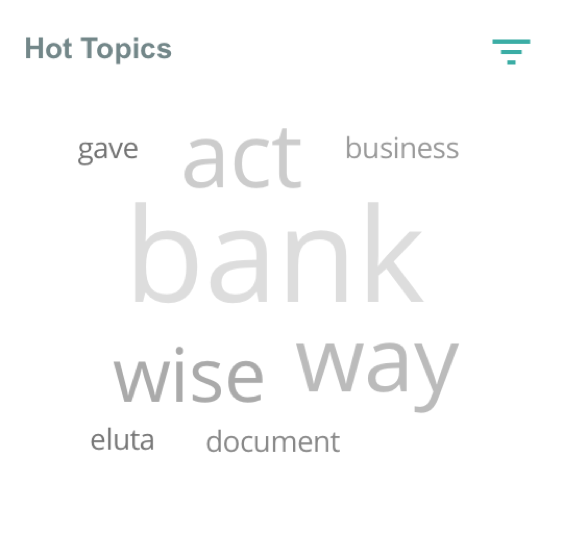
2. Improved customer service
Another very important use for social listening is to monitor and improve customer service. Since social listening means listening to the entire web’s conversations, that means you’ll be better equipped to immediately catch any complaints, questions and any other customer service issues from your customers, even if they don’t actually tag you in their posts (which does happen quite a bit!).
3. Lead generation
Now we’re getting to the really exciting stuff (for me, at least!): generating leads. Or better said, discovering them for yourself.
The internet is full of opportunities – but you need to listen in, in order to actually discover them.
Consumers are increasingly using the web to research products before they make a decision to buy; and many of them also ask the web for their opinions: they ask their friends and followers on social media, they comment on blogs, they join relevant forums and discuss products and their features with like-minded individuals and so on.
This presents your business with a great opportunity: set up several monitoring searches across the web (or just the channels you prefer) using the right keywords, so that whenever someone is talking or asking about your product, about your competitors and so on, you can jump in promptly.
To be fair, there are numerous other ways to use social listening: from managing your reputation to content research and from measuring share of voice to monitoring your marketing campaigns’ results, social listening is extremely versatile.
And that’s what makes it such an important tool, no matter what industry you’re in or what the size of your business is.
But now, let’s look at the specifics of setting up social listening for your business.
How to set up social listening across your business
In order to set up social listening for your business, you will, of course, need a tool. While there are a lot of tools out there that do this, I want to talk to you about Auris, from GenY Labs.
The reasons are not far to seek. Auris is a full-fledged social listening tool which allows you to monitor and listen in to online conversations. What’s more, you can even include private data in your searches, such as any customer care emails you’re getting directly.
Plus, you get specialized solutions for pretty much any major industry:

When you first set up your Auris account (and yes, there is a free version that you can try out), you’ll be asked what industry you’re in to help set up a listening search that will best suit your needs.
[click_to_tweet tweet=”How to go from social listening to actionable insights with @genymediumlabs #businesstips #businesstools” quote=”How to go from social listening to actionable insights with @genymediumlabs #businesstips #businesstools”]
Next, you can set up your keywords and data sources:
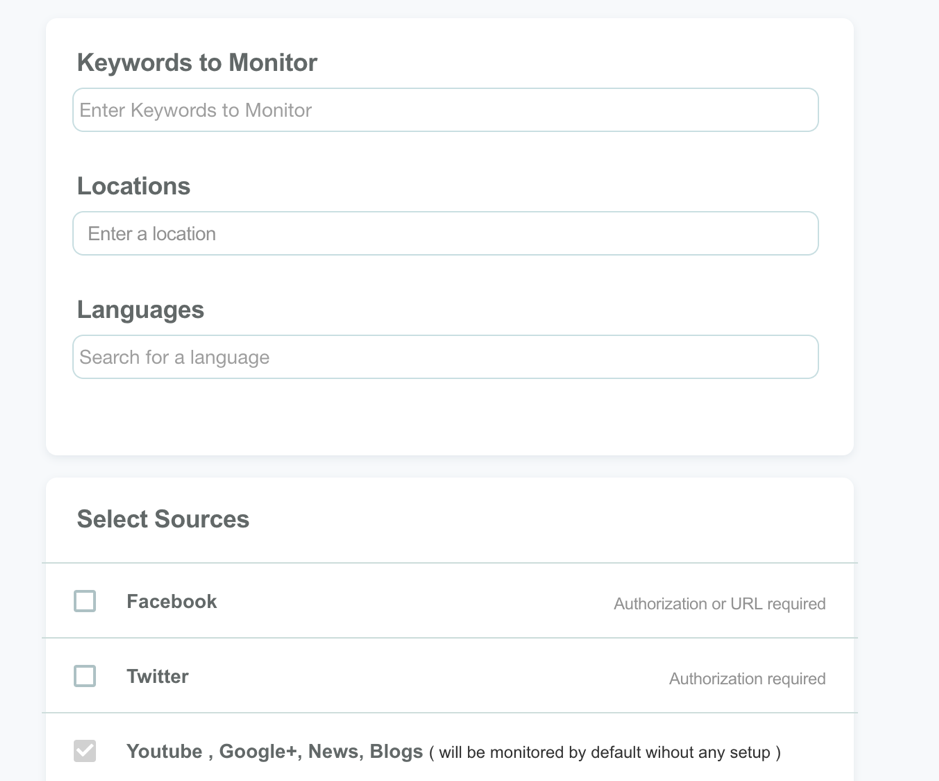
The tool can pull data from pretty much any source you can think of and then some: from social media networks and video content (such as from YouTube, but also from other sources) to news sites and blogs and to forums and review boards. So, yes, pretty much any online conversation (that is public as well, of course) in all 140 of the mainstream languages. Also, all data is updated in real time and you can filter the data you receive, by region. Which is very useful both if you only serve one specific location and if you are a multinational and want to listen separately to all your different markets.
Now I want to show you how exactly you can leverage Auris to grow your business…
Once you’ve set up the keywords and sources you want to listen for, you can also set up competitors for yourself so that you can monitor and compare your results with them:
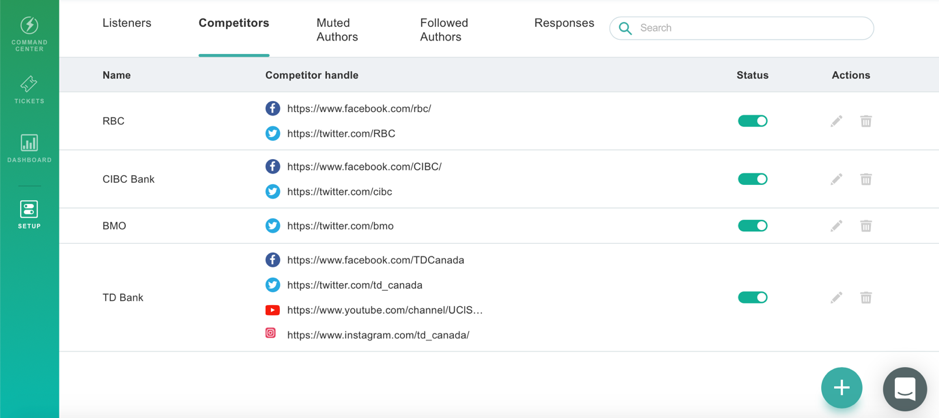
Plus, you can add specific people that you want to listen to, as well as “mute” certain authors so you don’t see their posts in your feed.
One really cool thing you can do in the setup phase of Auris is that you can create canned responses which you can then use to quickly respond to customer service issues, common questions you keep getting and to any potential leads you might discover through your searches:
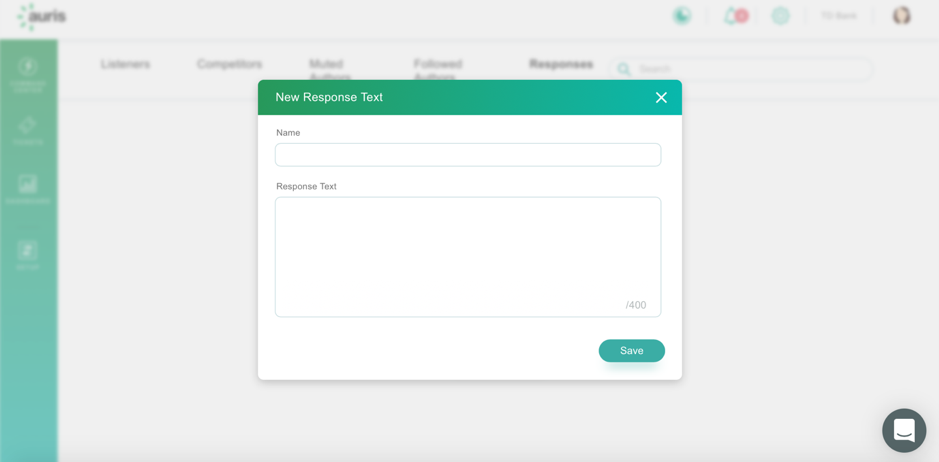
This way, whenever you go through your feed in the Command Centre tab, you can quickly go through all the latest posts received and respond promptly to any important mention.
Just click on Reply on any post that appears in the Command Centre and you’ll be able to type in your response or use one of your saved responses and make any changes needed to personalize the message:
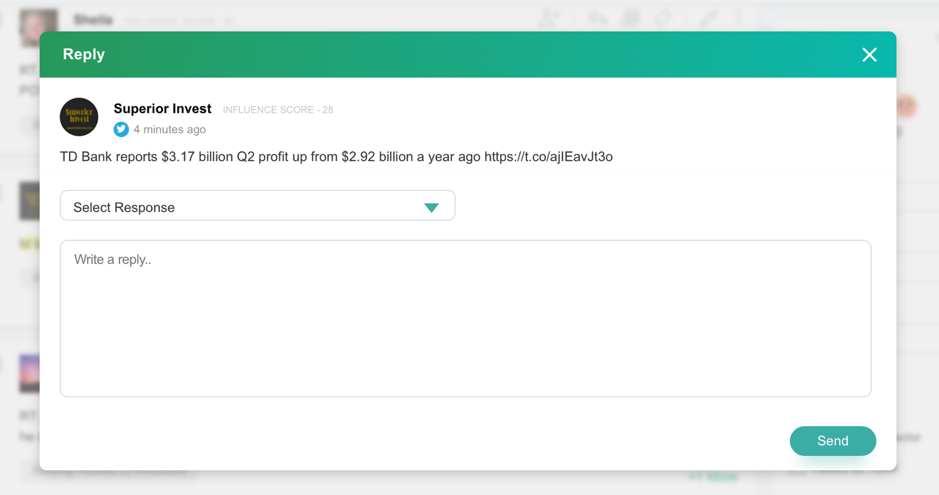
Another way to save time when managing your results and messages is to create automated workflow rules for the AI-powered Auris:
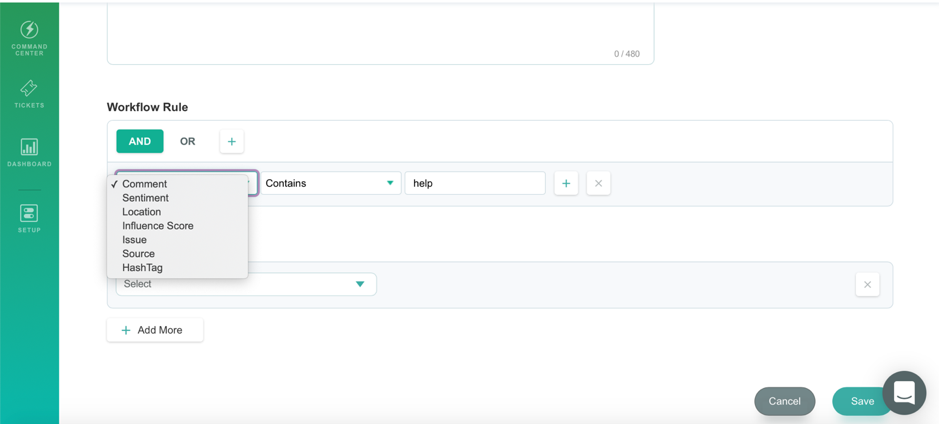
As you can see above, there are several options on tap; to give you a few examples of what you can do, you can automatically respond to any comments containing specific words and that have a negative sentiment with a canned response; you can automatically archive any comments that use a specific word and come from a specific location – and so on and so forth; you can add as many extra workflow rules as you wish, so as to completely fine-tune your operation and save as much time as possible:
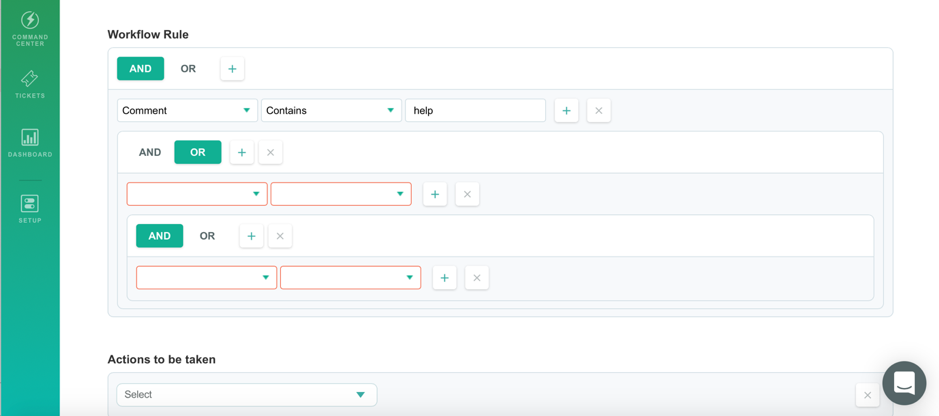
Let’s go back to the Command Centre though; this is where you can see an overview of your searches’ results, along with the posts generated by your search:
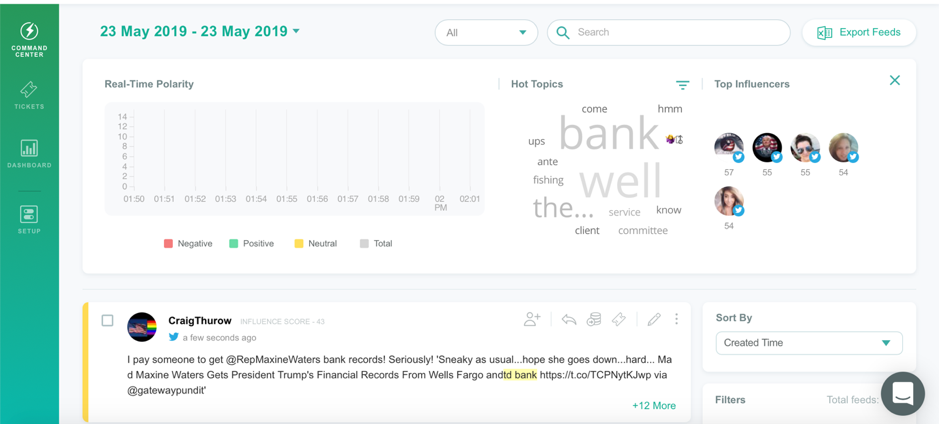
Plus, you can also see a word cloud with the most used words in your search, along with a list of the top influencers discovered through the search.
[click_to_tweet tweet=”How to go from social listening to actionable insights with @genymediumlabs #businesstips #businesstools” quote=”How to go from social listening to actionable insights with @genymediumlabs #businesstips #businesstools”]
If you want to find specific types of posts, you can use the sorting and filtering options in the right-hand side of the Command Centre: filter them by sentiment (positive, negative and neutral), by their source (social media, news sites, forums, etc.) and by the poster’s influencer score, which is quite useful if you want to discover social influencers to collaborate with.
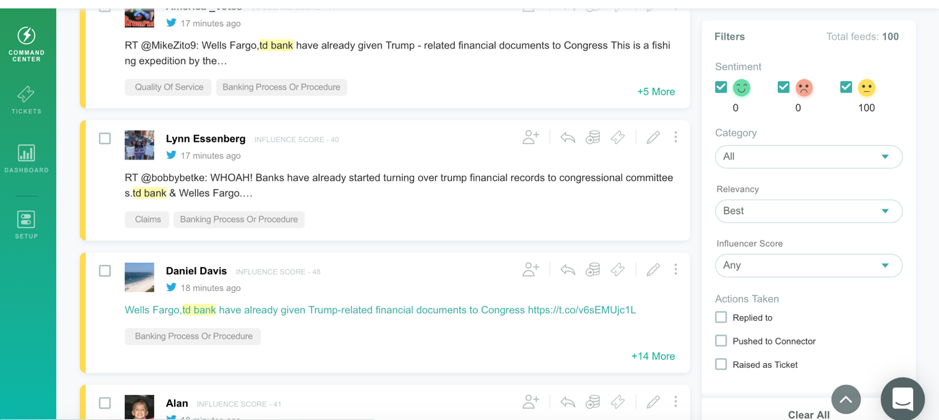
Another cool filtering option is via actions taken: for example, you might want to see all the posts that have been replied to or you might like to see all the posts that raised a ticket (i.e. those all-important posts that you really want to keep an eye on, and get marked as such).
As I mentioned earlier, you can respond to posts from this dashboard, and you can also take other actions as well for any post generated by the search; for example, you can turn it into a ticket (as before), you can follow that specific author or mute them so you don’t see any other posts from them, you can modify the sentiment for that post manually if you don’t agree with the sentiment generated, or take certain actions in bulk:
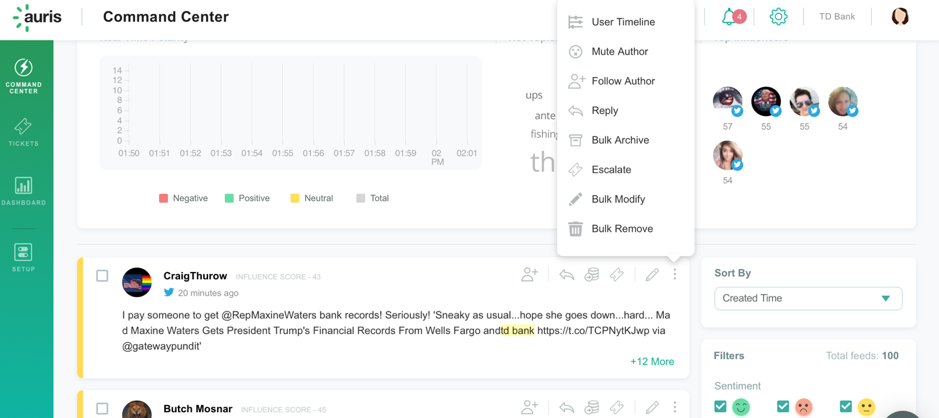
But my favourite option here is the User Timeline; this allows you to see all your history with that user at a glance, as well as any posts that they’ve created which showed up in your listening search.
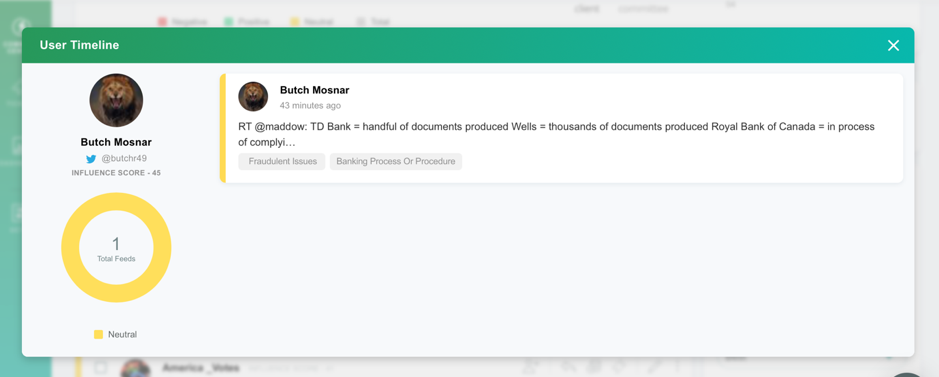
This feature is highly useful for a number of reasons:
- When it comes to customer service issues, you can see at a glance if that user has had any other issues in the past
- See that users’ relationship with your brand
- If you want to convert them into customers, this will help you further nurture your relationship with them, as you know exactly what other conversations you’ve had in the past and what their relationship is like with your brand
If you want to see a bigger overview and an enhanced view of your data, head over to the Dashboard; here, you can see a complete feed analysis (along with some other cool stuff which I’ll get to in a bit), as well as generate reports.
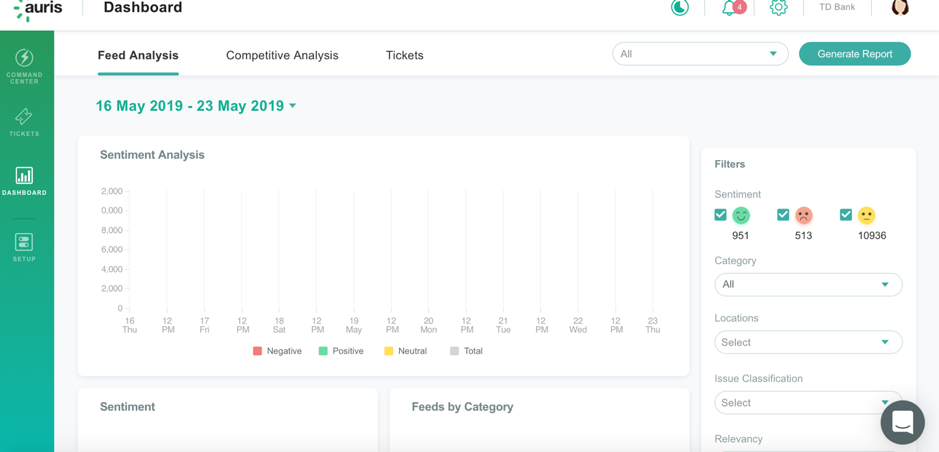
Like with the Command Centre, you can also filter the results to show what you’re most interested in, but the options are a bit different; for example, you can also filter by specific regions your entire search is for a specific country:
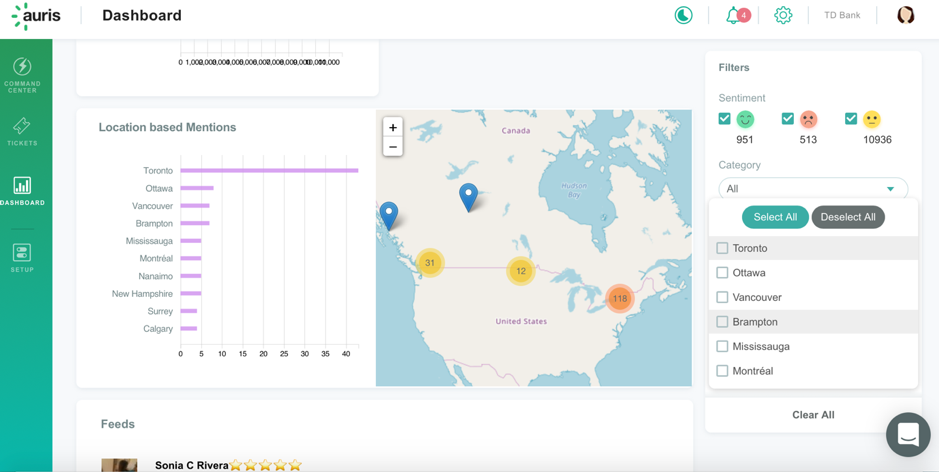
But the absolutely brilliant part is that you can filter results based on the issue it presented, as you can see in the screenshot below:
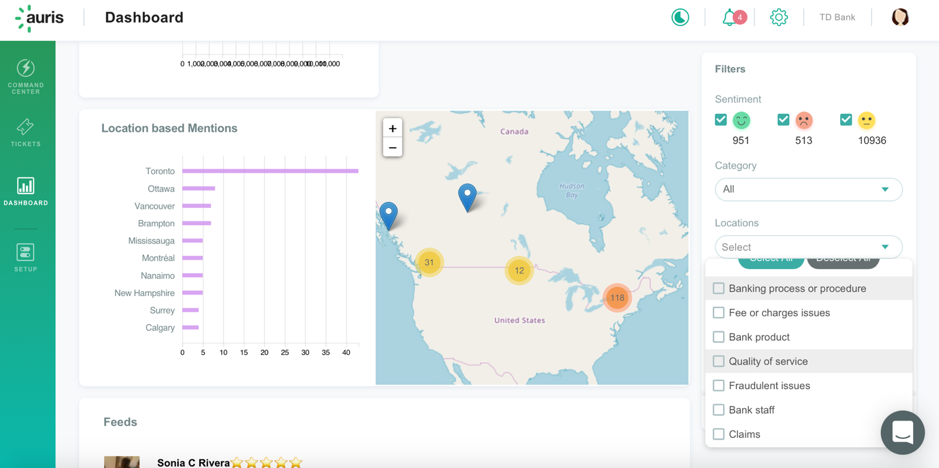
Whenever a new post is collected by the tool, it can be automatically tagged so you can see, at a glance, what it’s about; for example, it might be a tweet that’s talking about pricing or maybe a Facebook post complaining about the quality of your product.
You can then easily filter through these, as seen above so that you can only see those posts talking about the quality of the product or service or any other topics that are most relevant to you.
These features allow you to figure out exactly what is causing a negative sentiment amongst your customers/followers/potential customers/etc. so that you can look into it immediately and act.
And, as I mentioned before, it’s all done in real time.
If you want to generate a report of your results, either to send it off to a client or manager, or simply for safekeeping, it’s as easy as clicking a button. Auris will then automatically generate a report in PowerPoint format. You can present it right away or edit it to suit your particular needs; but first, make sure to select the time period for the report:
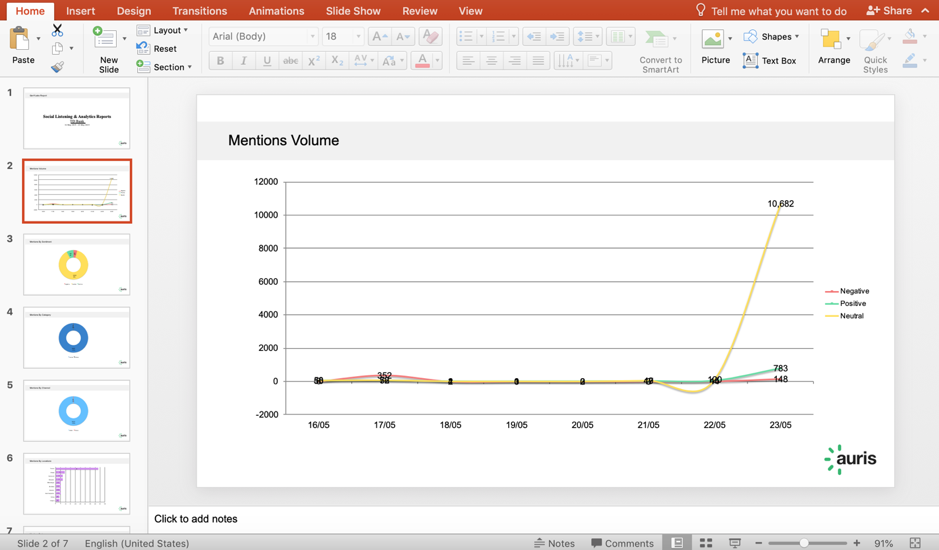
Plus, you can also set up email alerts so that whenever there’s something unusual happening (such as a boost or drop in traffic), you’re immediately notified and you can take action.
Next up, there’s the competitive analysis tab; this is where you can see how exactly you compare to your set of competitors.
There are some really interesting features here, but my favourite by far is probably Share of Spend – something that you don’t find just anywhere.
Essentially, the tool estimates how much each competitor has spent on their posts, ads, and so on:
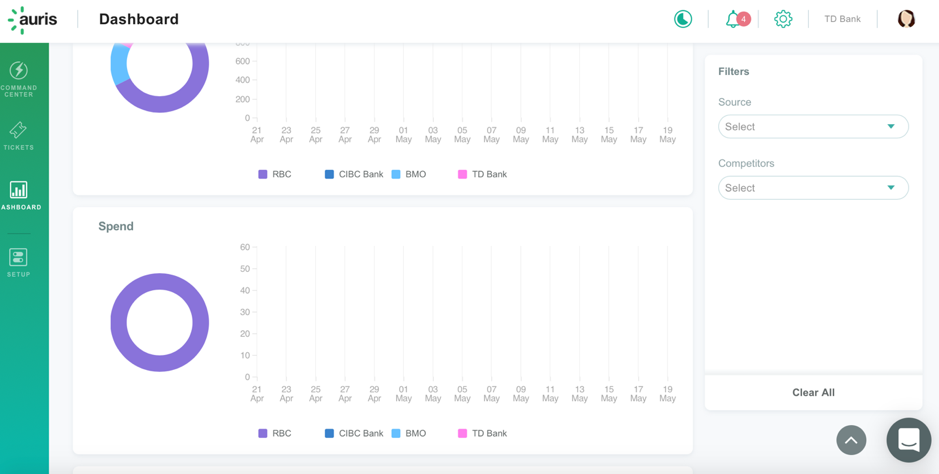
Beyond share of spend, you can also check share of engagement, share of number of posts and share of reach; when you see this together with the share of spend it can provide you with some very interesting insights on whether investing more money in ads and other paid promotions, will actually boost your results.
If you want to save all this information, you can generate a report for safekeeping.
With tools of this kind, you also want to make sure that you can connect any other relevant tools and apps so that you can automate as much as possible; with Auris, there are several integrations available for Support (tools like Zen Desk and Fresh Desk, CRM (Zoho CRM, Salesforce, Hubspot), Leads and, of course, social media websites, including Google My Business.
[click_to_tweet tweet=”How to go from social listening to actionable insights with @genymediumlabs #businesstips #businesstools” quote=”How to go from social listening to actionable insights with @genymediumlabs #businesstips #businesstools”]
Conclusion
As I mentioned at the start of this article, no matter what business you’re in, social listening is simply a must-have tool. From customer service to reputation management and to lead generation, social listening tools are some of the most versatile digital tools we have available. And if you’re unable to decide where to start, Auris is a great option as it’s not only easy to set up but has some really awesome features, such as industry-specific setups, automated tagging and live data.
Have you ever tried Auris? What other social listening tools have you tried out? Let me know in the comments section below and please do share 🙂

Follow Lilach















